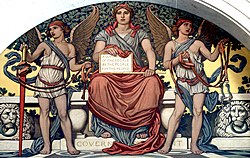
Back Teoría de la ilusión financiera Spanish Illusione finanziaria Italian 財政錯覚 Japanese Iluzja podatkowa Polish Ilusão fiscal Portuguese Фискальная иллюзия Russian Mali aldanma Turkish
| Public finance |
|---|
 |
In public choice theory, fiscal illusion is a failure to accurately perceive the amount of government expenditure. The theory of fiscal illusion was first developed by the Italian economist Amilcare Puviani in his 1903 book Teoria della illusione finanziaria (Theory of Financial Illusion (not yet translated into English, but translated into German in 1960 under the title Die Illusionen in der öffentlichen Finanzwirtschaft, Berlin: Duncker & Humblot, 1960)).[1][2] Fiscal illusion occurs when government revenues are not completely transparent or are not fully perceived by taxpayers; then the cost of government is seen to be less than it actually is. Since some or all taxpayers benefit from government expenditures from these unobserved or hidden revenues, the public's appetite for government expenditures increases, thus providing politicians incentive to expand the size of government.
- ^ Puviani, Amilcare (1897). "Teoria della illusione nelle entrate publiche". Perugia.
- ^ Puviani, Amilcare (1903). "Teoria della illusione Finanziaria". Palermo. German translation: Die Illusionen in der öffentlichen Finanzwirtschaft